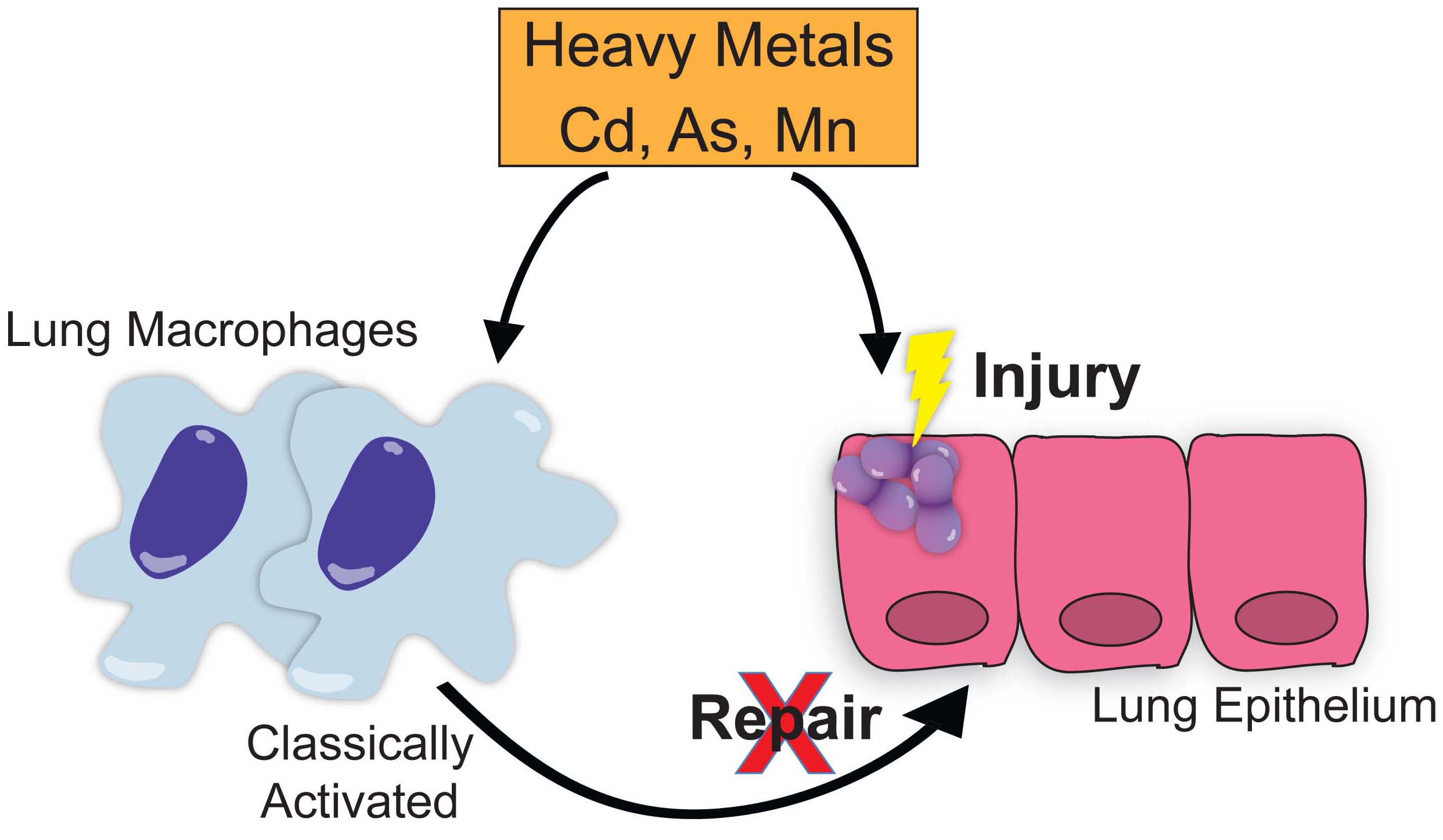We postulate that exposure to heavy metals exacerbates LRTI and lung injury due to the persistence of lung macrophages that maintain a classically activated phenotype.

Aim 1: Determine if residents of the Affected Area (proposed NPL area) compared to residents of the Control Area have an increase in classically activated lung macrophages. The goals of these studies are to determine if macrophage phenotypic switching is impaired in residents from the Affected Area compared to control subjects and if BAL fluid from residents in the Affected Area alters wound closure and permeability of injured alveolar epithelial cells.
Aim 2: Determine the molecular mechanism(s) by which heavy metals mediate classical and attenuate alternative activation of lung macrophages. The goals of these studies are to utilize genetic approaches to determine the mechanism(s) by which macrophages maintain persistent classical activation.
Aim 3: Determine if the severity of LRTI and lung injury is exacerbated by heavy metals and heavy metal mixtures. The goals of these studies are to determine if heavy metal-exposed mice have increased bacterial load, lung injury, and mortality compared to WT mice infected with S. pneumoniae. Proof-of-concept will be determined by using mice harboring a conditional deletion of PPAR- in macrophages.







